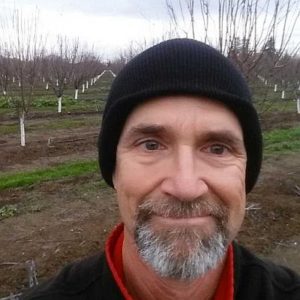Use the Off-Season to Your Orchard’s Advantage

Franz Niederholzer
While the growing season and harvest are behind you, the dormant season is not a time to take a break, says Franz Niederholzer, University of California Cooperative Extension Farm Advisor, Orchard Systems.
In fact, this is a time to help give your orchard a leg up on next season.
This used to mean that a fall nitrogen application was appropriate, but Niederholzer says when studying the fertility of orchards during and postharvest and how those applications impacted the next season’s yield, there was not a noticeable difference.
“If you manage your nitrogen well, and match your nitrogen applications to your crop load and crop development, we haven’t been able to show a yield benefit to a late-season fall application,” he says.
However, there are many other important things to devote your time to instead so you can assess the past season and prepare for the next one.
“At the end of the long season, unfortunately there is plenty to, do,” he says. “The days are getting shorter, everybody’s tired, it’s been a long season, but there are things that are really important to do for the next year. Take that time and energy and focus on those things.”
Here are some areas Niederholzer suggests you pay attention to and focus on to get a good start next year:
- MEET TREES WATER NEEDS — Irrigation is a vital part of setting a proper crop load next year. Niederholzer suggests “nothing in excess, but not walking away from water. Adequate moisture in the orchard postharvest is critical to a profitable crop next year.”
PAY ATTENTION TO NUTRITION — While a fall nitrogen application may not be a necessity, it is important to pay attention to your trees’ potassium, boron, and zinc levels. Summer leaf sample results will also tell you whether or not you need to make a late-season nitrogen application if your trees carried a large crop.
“Fall applications of foliar zinc and boron are often necessary in areas where boron is low, especially the East side of Sacramento and the San Joaquin Valleys. Check the hull analysis results to see if boron is needed.”
CONTROL GOPHERS — “Gophers are like rust, they never sleep,” Niederholzer says. The orchard pests have a late-season cycle so now is prime time to take pest control seriously and keep populations low. He suggests using multiple control methods such as trapping, fumigation, and baiting.
SURVEY WEEDS — It’s a good time to also look at your orchard floor with the help of a postharvest weed survey by a PCA and see what weeds have started to emerge and what you missed this past season.
“Some growers will put on a pre-emergence herbicide in November and hope for rain because for some orchards, depending on the soil type, getting into the orchard is difficult once the rain comes,” he says.
CONTROL NOW, NOW — Niederholzer says this was a particularly bad year for navel orangeworm (NOW). Removing and disposing mummy nuts becomes your first line of defense against a strong spring emergence. As you’re collecting the mummies to dispose of, he also suggests you look at your mummies to get an idea of the NOW populations (percentage of infested mummies) in your orchards.
He also suggests you look at Emily Symmes’ advice on harvest nut samples. For more on nut sampling scouting tips, see Symmes story on page 32.
PLANT YOUR COVER CROPS — “Now’s the time to be planting cover crops, or weed pastures, or buffer strips and those can be all one and the same,” he says.
ASSESS YOUR SCALE RISK — Niederholzer says it’s also a good time to get a handle on what your scale populations look like in your orchard by taking a dormant spur sample.
“San Jose scale, in particular, but all the scale can build up in an orchard over time so keeping tabs on the population is an important task,” he says.
Make sure your scale populations are below the thresholds tolerated, following University of California’s IPM guidelines: http://ipm.ucanr.edu/PMG/C003/m003dcdmtspursmpl.html.
GET INFORMED — Above all, Niederholzer says attending winter meetings such as the Almond Board of California’s Almond Conference is a good place for continuing education, meeting up with PCAs and growers throughout the state, and hearing about the latest research. The ability to exchange information in one place is a vital way to help you improve your operation and growing practices.
“It’s a great place to get a snapshot of the industry,” he says. “It’s a good conclusion to the season and good preparation for the next one.”
REMEMBER WHY YOU’RE DOING THIS — “Years ago I had a long checklist and a grower looked up at me and said ‘Thanks, Franz, Thanks. I was just going to take a break and now you hand me this big long checklist.’”
It’s important to keep in mind that you’re setting your crop up for the next season, Niederholzer explains. The buds have differentiated, so while these tasks may seem like extra work, each step you take can help you have an even better 2018.










